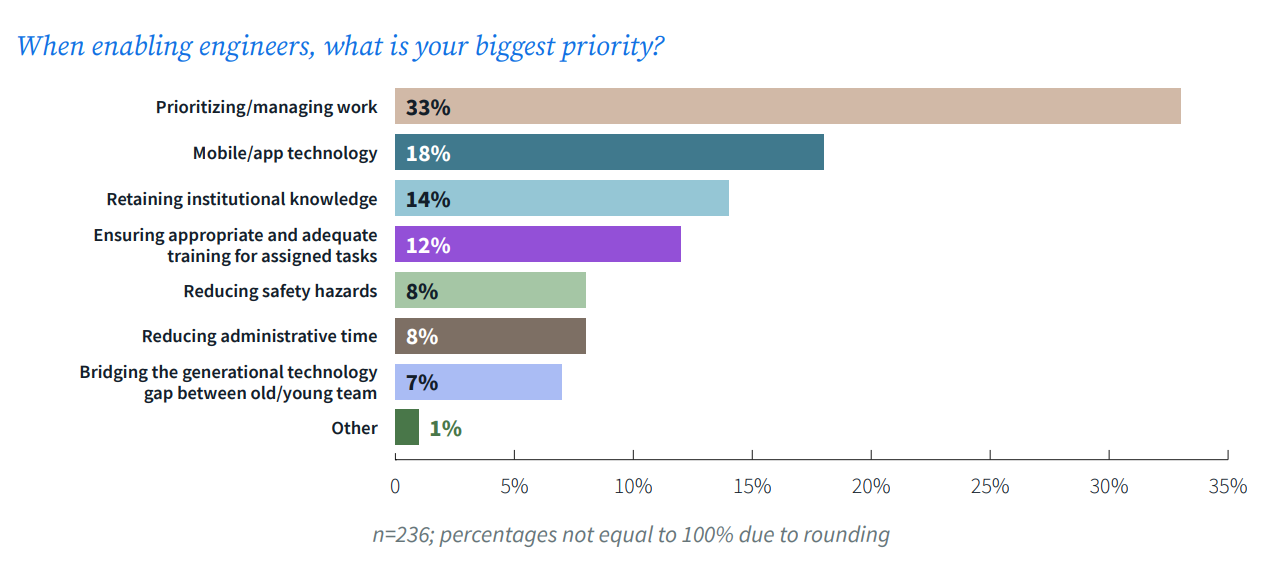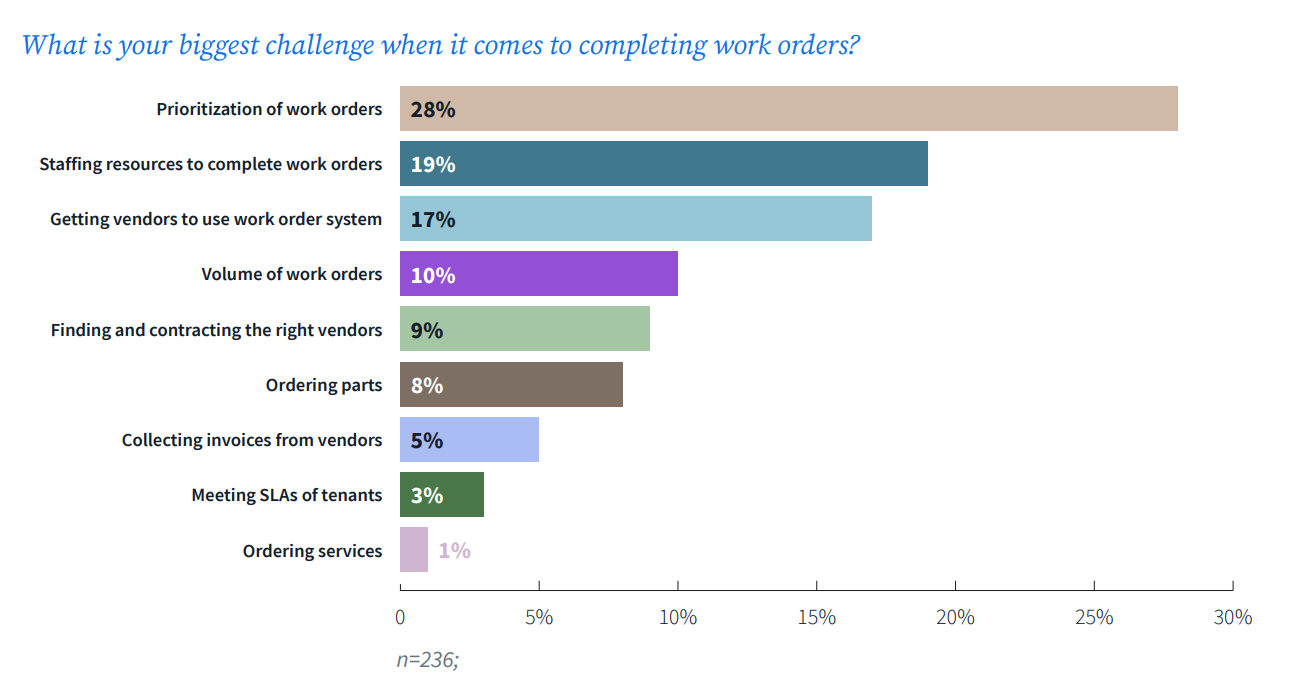In the world of commercial real estate (CRE), property teams are encountering a growing challenge—doing more with less.
Labor shortages are creating significant challenges for property teams in the CRE industry, affecting their ability to efficiently manage properties and meet the needs of tenants. As the demand for commercial real estate continues to grow, property teams are finding themselves understaffed, leading to increased workloads and difficulties in prioritizing tasks.
To dive deeper into these pain points, Building Engines, a JLL company, partnered with Building Owners and Managers Association International (BOMA) to survey over 230 CRE professionals. The responses collected reveal not only the current state of property management but also how properties teams plan to navigate workflows and enable engineers amid staffing restraints.
What property teams are thinking amid staffing concerns
The results from this year’s survey reflect a stark reality: prioritization of work is critical. In fact, it is the No. 1 priority for CRE professionals when enabling their engineers and the No. 1 challenge when it comes to completing work orders.
And property teams surveyed for the report said that a shortage of staffing resources is a top challenge for prioritizing and completing work in a timely manner.
The difficulties of prioritizing may be exacerbated if work orders are being managed manually by property teams. Without a standardized prioritization system in place, every work order that comes through could feel like a fire drill for teams who are already stretched thin.
The CRE industry requires a diverse range of professionals, including property managers, engineers, technicians, and administrative staff. However, finding qualified individuals to fill these positions has become increasingly difficult, resulting in a competitive labor market. Property teams must now compete for top talent, leading to increased pressure to attract and retain skilled professionals.
Technology as a solution
In the midst of clear staffing challenges and struggles with workflows, technology offers a solution.
With the help of mobile technology, engineers can address multiple concerns right from the palm of their hand, communicate with tenants and colleagues, and work on the go from anywhere, at any time. Collaboration with colleagues becomes as simple as a few taps on a screen, fostering a more cohesive and integrated work environment.
Another solution? Work order management software.
By leveraging such technology, property teams can automate the critical task of prioritization, classifying work based on pre-defined criteria and levels of urgency. With such systems in place, clarity emerges out of chaos, enabling property teams to quickly decide which tasks require immediate action and which ones can stand to wait. This clarity not only aids in workflow management but also ensures that high-priority items receive the swift response they require, mitigating the risk of service delays and tenant dissatisfaction.
The future is bright even amid labor shortages
Despite labor shortages, the future for property teams looks bright with the adoption of intelligent work order management systems and mobile technology. Embracing these tools is crucial for property teams to excel and thrive in the face of workforce adversity. By leveraging technology, property teams can streamline their operations, increase responsiveness, and ensure a more efficient future in CRE property management.
To learn more about the state of commercial real estate property management and gain further insights, you can download the free report, “The state of commercial real estate property management for 2024.”
















